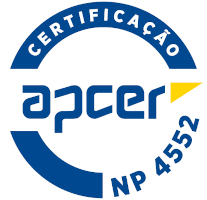2025
Spatial Analysis
Name: Spatial Analysis
Code: PAO12331M
6 ECTS
Duration: 15 weeks/156 hours
Scientific Area:
Landscape and Planning Sciences
Teaching languages: Portuguese
Languages of tutoring support: Portuguese, English
Regime de Frequência: Presencial
Sustainable Development Goals
Learning Goals
Description and evaluation of the fundamental computational models for the representation and storage of
geographic information
Description of fundamental spatial analysis processes and operations in geographical information
systems.
Evaluation of spatial data models considering their potential for spatial analysis operations.
Evaluation of the implications of spatial data model characteristics for the definition of GIS applications
and geographic modelling.
Evaluation of potential future developments and research directions in relation to spatial data models and
spatial analysis.
geographic information
Description of fundamental spatial analysis processes and operations in geographical information
systems.
Evaluation of spatial data models considering their potential for spatial analysis operations.
Evaluation of the implications of spatial data model characteristics for the definition of GIS applications
and geographic modelling.
Evaluation of potential future developments and research directions in relation to spatial data models and
spatial analysis.
Contents
1.Geographic representation: evaluation of the different representation metaphors and an introduction to a
systemic appro ach to representation metaphors.
2. Spatial data models: detailed analysis of vectorial model, raster model and other data models.
3. Single layer spatial operations: neighbourhood analysis, buffering, masks and filtering.
4. Multiple layer spatial operations: overlay analysis and geoprocessing operations.
5. Dimensionality of geographic data: 3-dimensional models and an introduction to time modelling.
6. Conceptual design of data models and geographic modelling: geographic modelling concepts and
flowcharts design including map algebra operations.
7. Network analysis: shortest path analysis, service area, cost distance functions
8. Future perspectives: new spatial data models, new models for spatial relations and new spatial analysis
processes.
systemic appro ach to representation metaphors.
2. Spatial data models: detailed analysis of vectorial model, raster model and other data models.
3. Single layer spatial operations: neighbourhood analysis, buffering, masks and filtering.
4. Multiple layer spatial operations: overlay analysis and geoprocessing operations.
5. Dimensionality of geographic data: 3-dimensional models and an introduction to time modelling.
6. Conceptual design of data models and geographic modelling: geographic modelling concepts and
flowcharts design including map algebra operations.
7. Network analysis: shortest path analysis, service area, cost distance functions
8. Future perspectives: new spatial data models, new models for spatial relations and new spatial analysis
processes.
Teaching Methods
The teaching methodologies are based on the theoretical and theoretical-practical exposition of concepts and methods, associated with the syllabus and accordingly to the structure of the teaching materials. Practical exercises are carried out in a geographic information systems (GIS) environment, centered on the presentation of applied spatial analysis operations.
Two assessment regimes are used: continuous assessment; final evaluation.
Continuous assessment regime - The student must prepare two assignments during the academic period:
1 - Spatial data models, with a weighting of 30% in the final grade;
2 - Geographic model of spatial analysis processes, with a weighting of 70% in the final grade.
Final evaluation regime - The student must deliver the two assignments referred above simultaneously, during the evaluation period, in normal or appeal period.
Students who choose the continuous assessment regime can only be re-evaluated during the appeal period.
Two assessment regimes are used: continuous assessment; final evaluation.
Continuous assessment regime - The student must prepare two assignments during the academic period:
1 - Spatial data models, with a weighting of 30% in the final grade;
2 - Geographic model of spatial analysis processes, with a weighting of 70% in the final grade.
Final evaluation regime - The student must deliver the two assignments referred above simultaneously, during the evaluation period, in normal or appeal period.
Students who choose the continuous assessment regime can only be re-evaluated during the appeal period.
Teaching Staff
- Nuno Alexandre Gouveia de Sousa Neves [responsible]





















